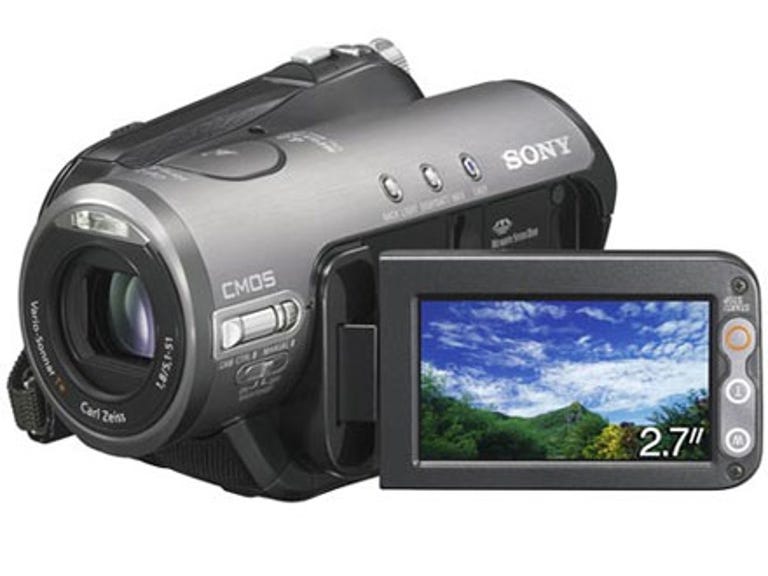 Why You Can Trust CNET
Why You Can Trust CNET Sony HDR-HC3 HDV camcorder review: Sony HDR-HC3 HDV camcorder
A good choice for families wanting to match a camera to their HD TV set. Automatic operation means not needing to know much to get pleasing images.
Anyone who has already shelled out for a high definition TV set, or is thinking of doing so in the next 12 months will, no doubt, be intrigued by HDV camcorders. If there's nothing broadcast in HD on telly, they can at least watch the kids' footy match in all its muddy glory.
The Good
The Bad
The Bottom Line
Loosely translated, the 1080i standard means images are recorded at 1080 lines of resolution. No surprises then, that high definition cameras provide a new level of detail and clarity, but while it may be possible to enhance beautiful images, the same might be said of images recorded by inexpert hands and every little mistake they make. So, of course, delivering high def' capabilities to consumers is not just a matter of sticking the right chip in a camera. It's in the manufacturer's interest make the resulting images look as good as possible, whether or not the person at the controls knows what they're doing.
Enter Sony's HDR-HC3 -- described as an "ultra compact" camcorder. It is perhaps the most consumer-oriented model so far, within the HDV range pioneered by Sony. All members of the range can generally be commended for their automatic features, but this camcorder really depends on them.
If default settings for automatic were not enough for the timid cameraperson, there's Easy mode (perhaps better described as "even easier" mode). Pressing the Easy button takes what is essentially the standard automatic operation just a little further by disabling a few other settings. Perhaps its main purpose is to be of reassurance for those consumers who fear accidentally selecting a setting they don't understand.
Anyone looking to manually control the settings, such as those defining exposure -- shutter speed, iris or gain -- will be frustrated that these are controlled by the camera and that they get only a single exposure setting (but they probably shouldn't be looking at products at this end of the market anyway, albeit in an HDV camera).
Anyone who is happy enough to let the camera do the work should be pleasantly surprised with the outcome. The automatic features tend to get it right and they're quicker than one might expect. For example, if moving quickly from one subject to another in moderate light levels, the camera refocuses very quickly and smoothly to cope with changes.
For those who haven't made the leap to HD, take heart. The camera automatically down converts to the usual DV format for standard definition TVs and VCRs and the resulting image quality, whilst standard definition, is still rich and clear.
Of course, a Carl Zeiss lens helps achieve quality images, for either video or still. The HDR-HC3 also offers 4-megapixel stills, but stored only on Sony's own MemoryStick Duo or Duo Pro. Video is recorded to MiniDV tape. (While there are special HDV tapes available, professionals using HDV cameras use standard MiniDV tapes).
As one might expect from a camera touting high definition abilities, the bright, wide touchscreen LCD is one of its best features. It also has a secondary zoom control and recording start/stop which, by enticing two-handed operation, tends to help the user steady the camera and hold it more comfortably.
The touch screen is also how you control most of the settings. Poking your way through the menu system does give some image control to the user, but it's generally too clumsy if in a hurry or trying to capture a natural moment. Trying to set the manual focus or exposure, for example, in this manner is tedious.
As a concession, Sony has provided an easy to reach auto/manual toggle and dial near the lens. It offers access to one setting at a time, so you could leave it set on exposure or manual focus for ease. Or, one can also cycle through these by pressing and holding the manual button. (Without this feature users would be forced to go painfully through the touch screen menu each time they wanted to adjust more than one aspect of an image.)
There are a few minor quibbles with this camera: for starters, users have to charge the battery on the camera itself, so you can't use the camera and charge any extra batteries without buying a separate charger.
This camera also tried to make a bit of a fashion statement with a pleasing dark grey metallic and black casing, but the old fashioned battleship grey battery is the equivalent of a VPL (visible panty line).
The connectors available for this camera are an important part of the high definition equation. The camera has an HDMI (High Definition Multimedia Interface) port to connect to TVs with HDMI inputs. To use a firewire cable to connect to a TV you need one with a jack compatible with HDV 1080i.
Sony's copy protection mechanisms add a level of complexity. Presumably these will only affect would-be pirates, but it's worth being aware of limitations when troubleshooting in general. The HDMI connection won't work for output if the camera detects copy control signals in the images. And, the camera won't output images that are input to the camera with firewire.
